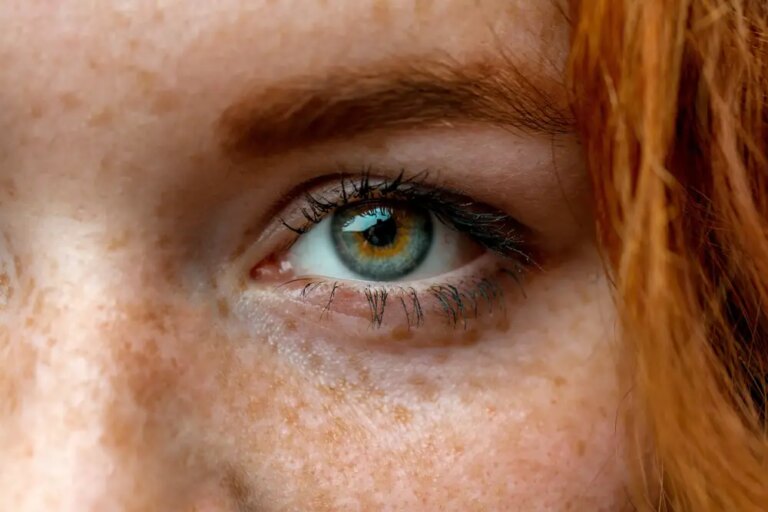When we talk about posture, the first image that often springs to mind is someone slouched over their desk, and we’re quick to attribute this to their inability to simply sit up straight. We’ve all heard those common refrains: “Stand tall!” “Don’t slouch!”
Yet, is the underlying cause of posture merely a lack of effort or awareness? The reality is far more intricate and fascinating.
Neurological research is now pointing towards a connection between our vision, inner ear health, and the way we hold ourselves. Moreover, our posture doesn’t just influence our physical health; it also silently communicates messages to those around us, impacting their perceptions and judgments.
The Crucial Role of Vision and Inner Ear Health in Posture
Recent neurological studies have shed light on the intricate relationship between our vision and inner ear function in the control of our posture. Surprisingly, these two elements play a significant role, jointly influencing our postural control. [1,2]
Researchers have suggested that up to 20% of our balance relies on inner ear balance information and 10% on vision. [2]
Our eyes and inner ears work in tandem to determine our sense of uprightness and spatial orientation, consistently making subtle adjustments to our posture automatically. This cooperation is essential in ensuring that we stay properly aligned with our surroundings.
Orientation in Space: Vision’s Impact on Posture
Vision is a primary determinant of how our body maintains its posture. The eyes act as continuous sensors, relaying information to the brain about our spatial orientation and how we relate to our immediate environment. When there’s a disruption in these visual cues, such as during moments of diminished visibility or when the eyes are closed, our postural stability can be compromised.
The mechanics behind this are fairly straightforward: our eyes capture visual data, which the brain then uses to make adjustments, ensuring that we stand, sit, or move in a balanced manner. For individuals with optimal vision, the brain can make quick and precise postural corrections based on the data received. [3]
While other sensory inputs – like tactile sensations from our feet or proprioceptive feedback from muscles and joints – play a role in maintaining posture, vision is paramount. It offers a direct and immediate understanding of our surroundings, aiding in real-time adjustments. This underscores the importance of good eye health and its direct correlation with our body’s ability to maintain a stable and upright posture.

Inner Ear Health and Posture
Both balance and posture owe much to the inner ear’s vestibular system. It comprises three fluid-filled semicircular canals, each oriented in a different spatial plane. Movements of the head lead to the displacement of the fluid within these canals that is detected by hair cells. Such sensitivity allows for the accurate identification and regulation of rotational movements in all directions.
Moreover, inside the inner ear, we also find the otolith organs: the utricle and the saccule. These organs have calcium carbonate crystals layered over hair cells. Shifting head positions relative to gravity causes these crystals to slide, stimulating the hair cells and providing a real-time feed of the head’s orientation in space. [4]
In studies, when individuals had their eyes closed or were in environments without visual cues, their ability to maintain posture was significantly impaired. The same negative effect on balance and stability was observed in cases of vestibular system impairment due to disease or injury. [5]
Taking Care of Your Eye Health
Our modern lifestyle has introduced several elements that can either promote or hinder good posture. Our eyes and posture are closely intertwined, with modern habits such as prolonged screen time and other causes playing a significant role:
- Screen Time and Posture: In the digital age, screens have become an integral part of our lives, from computers at work to smartphones and tablets for leisure. Unfortunately, excessive screen time can take a toll on our posture.
- Digital Eye Strain and Posture: Prolonged screen time often leads to digital eye strain, which can indirectly affect posture. When we’re engrossed in our screens, we tend to slouch or crane our necks, putting extra pressure on our spine.
- Ergonomic Setup: Arrange your workstation ergonomically to maintain eye level alignment with your screen. This reduces the need to strain your neck and back.
- 20-20-20 Rule: Every 20 minutes, take a 20-second break, and look at something 20 feet away. This simple habit can alleviate digital eye strain and improve posture.

Maintaining Ear Health
On the other hand, ear health is intricately linked to our posture and overall well-being, influenced by factors that not only affect our hearing but can inadvertently lead to postural imbalances and discomfort.
- Earwax Buildup: Excessive earwax can cause discomfort or affect your hearing. Constantly tilting or twisting your head to alleviate discomfort can lead to postural problems.
- Listening Habits: The use of earphones or headphones for extended periods, especially at high volumes, can contribute to poor posture. This is because people often bend their necks or hunch their shoulders while using headphones, leading to postural imbalances.
- Inadequate Ear Protection: Exposure to loud noises without ear protection, such as at concerts, construction sites, or during recreational activities like shooting, can lead to hearing damage. Hearing damage, in turn, can affect your spatial awareness and posture.
Being mindful of these factors can help you maintain better posture throughout your daily activities.
My Personal RX for Good Posture AND Well-Being
I’ve been struck by the overarching influence of posture on health. An aligned spine doesn’t solely ward off backaches—it has the potential to amplify lung function, optimize digestive processes, and even play a role in elevating one’s mood. In essence, managing our posture isn’t just a physical endeavor. It’s intricately tied to our holistic health and vitality.
- Opt for Natural Products: When choosing products, be it skincare or household cleaning agents, it’s crucial to select those devoid of harmful chemicals or synthetic additives. Nature often provides safer, more effective alternatives that are gentle on both our bodies and the environment.
- Empower Yourself with Knowledge: Immerse yourself in the insights provided by my 50-page Protocol e-book. This isn’t just a reading material; it’s a transformative guide that charts the path to holistic health, enabling you to lead a life brimming with energy and wellness!
- Prioritize Eye Health: Our eyesight isn’t just about seeing clearly—it’s central to how we navigate our world, which in turn impacts our posture. The Eye MAX supplements are meticulously designed to bolster macular health and fortify ocular circulation, ensuring our vision remains sharp and posture remains intact.
- Stay Active with Purpose: Engage in regular physical activity that not only invigorates but also fortifies key muscles, especially those supporting the spine. Incorporate exercises that specifically target the core and back muscles, creating a strong foundation for proper posture.
- Craft an Ergonomic Workspace: If you’re spending hours at a desk, it’s imperative to invest in ergonomically sound furniture. Chairs should provide lumbar support, and screens should be positioned at eye level, reducing strain and encouraging an upright posture. Remember, frequent breaks can also alleviate potential stress on the back and neck.
- Ensure Hydration: Consistently consuming ample water is vital, but it’s equally important to ensure its purity. Well-hydrated tissues remain supple, aiding in the maintenance of spinal disc health and overall flexibility.
With the right knowledge and tools, maintaining a strong, upright posture transforms from a mere physical act to a holistic lifestyle choice. Stand tall and thrive!

Sources:
- Alotaibi, A. Z., Alghadir, A. H., Iqbal, Z. A., & Anwer, S. (2016). Effect of absence of vision on posture. Journal of Physical Therapy Science, 28(4), 1374–1377. https://doi.org/10.1589/jpts.28.1374
- Thomas, E., Martines, F., Bianco, A., Messina, G., Giustino, V., Zangla, D., Iovane, A., & Palma, A. (2018). Decreased postural control in people with moderate hearing loss. Medicine, 97(14), e0244. https://doi.org/10.1097/md.0000000000010244
- Ustinova, K. I., & Perkins, J. M. (2011). Gaze and viewing angle influence visual stabilization of upright posture. Brain and Behavior, 1(1), 19–25. https://doi.org/10.1002/brb3.10
- Vestibular Disorders Association. (2022, December 28). How your inner ear helps you maintain balance and stability. https://vestibular.org/article/what-is-vestibular/the-human-balance-system/peripheral-vestibular-system-inner-ear/



















